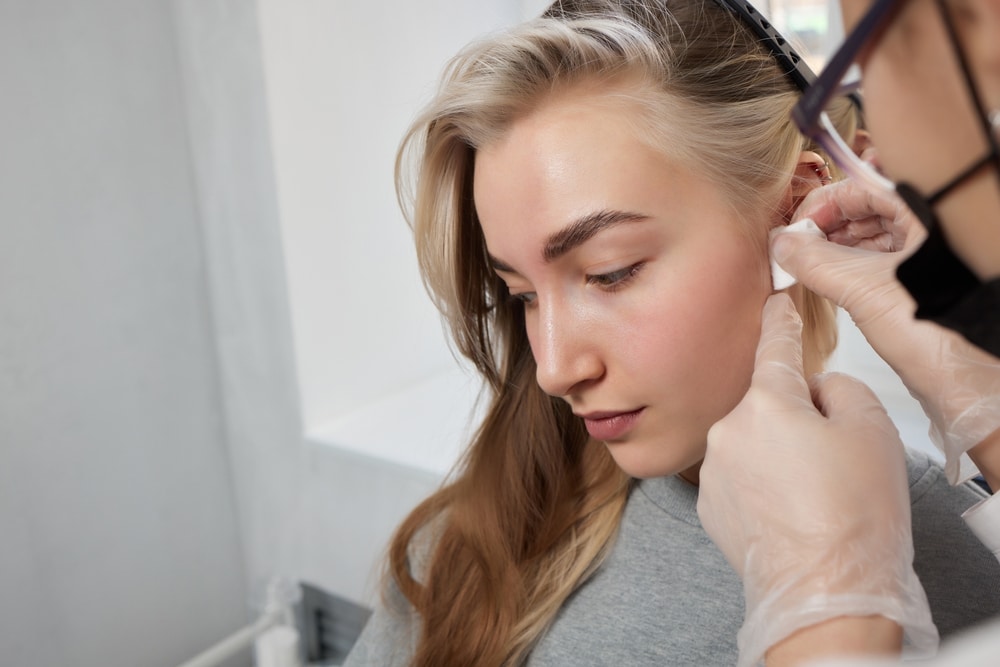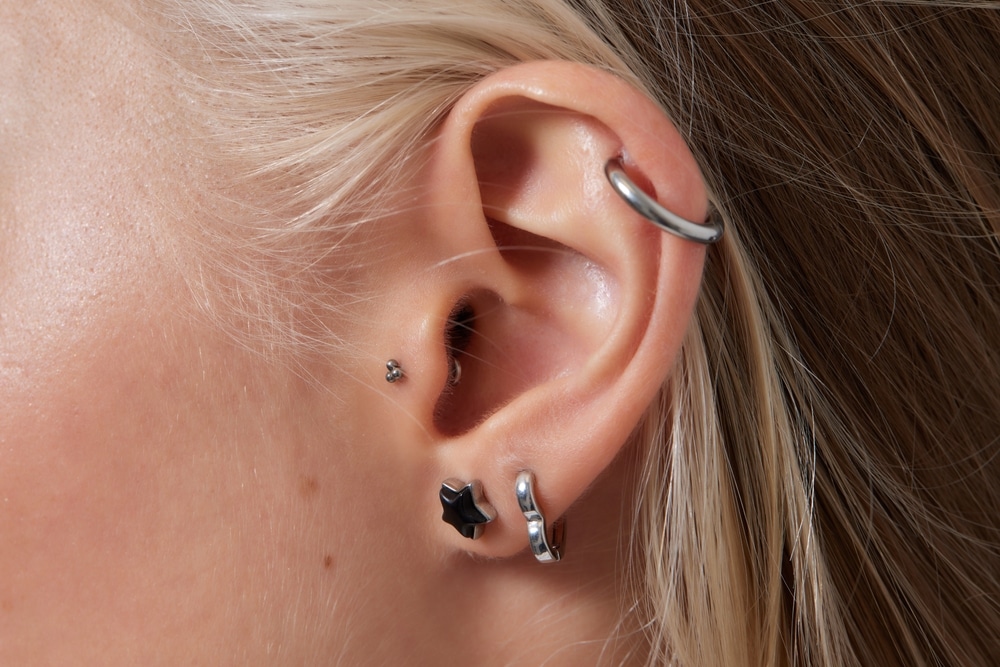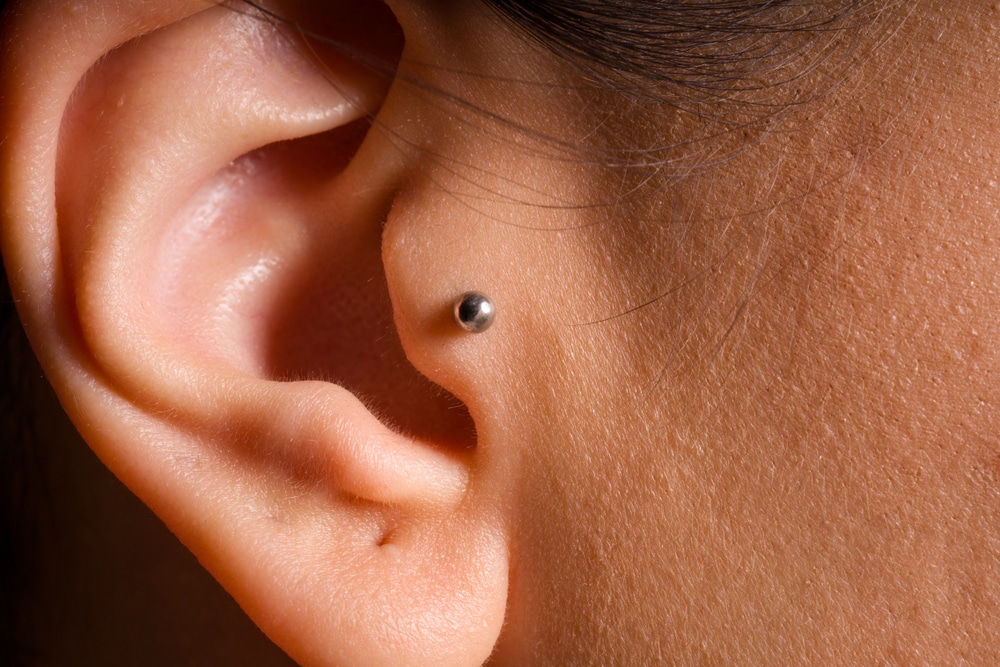Table of Contents
A tragus piercing is a trendy and distinctive way to enhance your overall look, offering a unique take on ear cartilage piercings. Positioned on the small flap of cartilage in front of the ear canal, this piercing has become a popular choice for those seeking a bold yet understated accessory. Whether you’re interested in showcasing your personal style or adding a new element to your existing collection of piercings, a tragus piercing provides plenty of versatility. From various jewelry options to an array of fashionable looks, this piercing is not only eye-catching but also practical for everyday wear. However, before diving into this stylish modification, it’s important to understand the procedure, healing process, and aftercare tips to ensure a successful experience.
What Is a Tragus Piercing?
A tragus piercing is a type of ear cartilage piercing that is placed through the tragus a small, rounded flap of cartilage that partially covers the ear canal. A tragus piercing involves puncturing this cartilage and inserting a small piece of jewelry, typically a stud or small hoop. Due to its unique placement and discreet appearance, it’s a trendy option for those looking to add a subtle yet stylish touch to their ear.
The Procedure

For those considering a tragus piercing, it’s crucial to choose an experienced piercing studio. Cartilage piercings, including tragus piercings, can be more delicate to perform, and a professional piercer ensures minimal complications and a smoother healing process.
Preparation
- The piercer will first clean the area around the tragus to remove bacteria or oils.
- A sterile needle is typically used for the piercing. Some piercers use clamps to hold the tragus in place, but others may prefer a freehand technique.
Piercing
- The piercer will mark the entry and exit points with a sterile marker.
- The most common gauge for a tragus piercing is 16 gauge, though some individuals may opt for different sizes based on personal preference.
- The needle is pushed through the tragus cartilage, which may be followed by some pressure or discomfort.
- Once the needle is through, the piercer inserts the jewelry, usually a small labret stud or captive bead ring.
- After the procedure, the piercer will provide cleaning instructions and suggest products to aid in healing, such as a saline solution. The entire procedure usually takes less than five minutes, though preparation and aftercare guidance may take longer.
Pain Level
The pain experienced during a tragus piercing can vary from person to person. Since the tragus is made of cartilage rather than soft tissue, it is generally considered to be more painful than a standard earlobe piercing. However, the pain is usually quick and manageable.
Most people report feeling a sharp pinch or pressure when the needle goes through. This discomfort generally subsides within seconds. Once the jewelry is in place, there may be some residual soreness, especially when touching or cleaning the area during the first few days.
Factors Affecting Pain
Thickness of the cartilage
People with thicker tragus cartilage may experience more pressure or discomfort during the piercing.
Experience of the piercer
A skilled and experienced piercer will minimize discomfort by using proper techniques.
Pain tolerance
Individual sensitivity to pain can play a role. Those with a high pain threshold may find the process relatively painless, while others may experience more discomfort.
Healing Time and Aftercare Tips

On average, a tragus piercing takes about 3 to 6 months to fully heal, but it can vary depending on individual healing rates and aftercare practices. The healing process for cartilage piercings tends to be longer and more delicate compared to soft tissue piercings like those on the earlobe.
Aftercare Tips
Clean the Piercing Regularly
Use a saline solution or a specialized piercing aftercare spray to clean earring holes and piercings twice a day. Avoid using alcohol or hydrogen peroxide, as these can dry out and irritate the piercing.
Avoid Touching
Refrain from touching the piercing with unwashed hands. Touching or twisting the jewelry can introduce bacteria and delay healing.
Avoid Sleeping on It
Try not to sleep on the side with the piercing to avoid unnecessary pressure or irritation.
Stay Away from Water Sources
During the healing process, avoid swimming pools, hot tubs, and submerging your ear in water. These environments can harbor bacteria that may lead to infection.
Avoid Changing Jewelry Too Soon
Resist the urge to change the jewelry before the piercing has fully healed. Doing so can disrupt the healing process and introduce bacteria.
Watch for Signs of Infection
Redness, swelling, and tenderness are normal during the initial stages of healing, but if you notice excessive swelling, pus, or intense pain, it may be a sign of infection. In such cases, consult a piercer or healthcare professional.
Potential Risks and Complications
As with any piercing, a tragus piercing comes with some risks:
Infection
If the piercing isn’t properly cleaned or is exposed to unclean environments, it can become infected. Infections can result in redness, pain, discharge, and swelling.
Keloids and Scarring
Some people are prone to developing keloids, which are raised scars that can form around the piercing site. Proper aftercare can help minimize this risk.
Jewelry Rejection or Migration
In rare cases, the body may reject the jewelry, causing it to move or migrate out of the piercing site. This can lead to scarring and a failed piercing.
Snagging
Since the tragus is in a more exposed location, there’s a higher chance of the piercing getting caught on headphones, hair, or clothing. Be cautious when using in-ear headphones or brushing your hair.
Best Jewelry Options for Tragus Piercings

The tragus-piercing jewelry you choose plays a vital role in both comfort and aesthetics. Since the tragus is a small area, the jewelry should be equally subtle and comfortable for long-term wear.
Labret Stud
This is one of the most common choices for tragus piercings. Its flat back ensures comfort and prevents irritation.
Captive Bead Ring
This type of ring closes with a small ball that fits snugly into the ends of the ring. It’s easy to clean and adds a stylish, minimalistic look.
Barbells
Small barbells, especially those with gems or decorative ends, can add a touch of personality to the piercing.
Hoops
Thin hoops can be stylish for a tragus piercing, though they may not be recommended for initial jewelry due to the healing process.
Conclusion
A tragus piercing is a stylish and unique addition to your ear piercings. While it may involve a bit more discomfort and a longer healing process compared to an earlobe piercing, proper care and patience can ensure a successful outcome. Always choose a reputable piercer to minimize complications and follow aftercare instructions diligently to avoid infection and promote quick healing. With the right jewelry and care, your tragus piercing will be a subtle yet fashionable statement.

